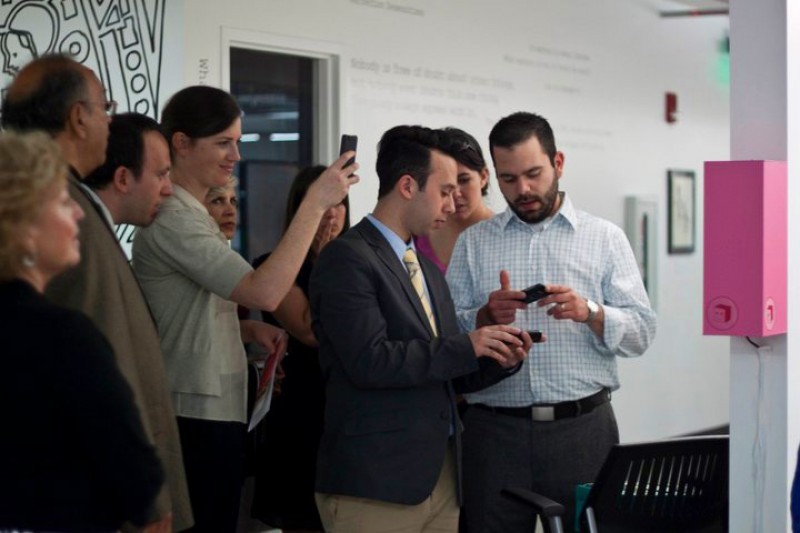Interactive framework
We were looking for a way to create interactions in the natural spaces of the building, on the walls, in the windows, and to avoid the “kiosk” interface as much as possible. By choosing the QR, we elected to leverage the user’s smartphone as the main user interface for the installation.
By now, most people at least recognize the form of the QR code, but many don’t yet know what they are used for. The QR code is most commonly used as a hyperlink to product or service information, and that’s how most people currently understand their usage. Our goal was to create a new context for the QR code for those users with prior experience, as well as introduce this use of the QR to a new audience.

We did know that the amount of show-goers with smartphones might be somewhat limited, but accepted the constraint. To simplify development, we limited support to touchscreen devices running Android and iOS. We attempted but found it difficult to support Blackberry devices, so they were only partially functional. (It’s worth noting that it was surprising to see how many designers/creatives use Blackberry devices; my stereotype of the Blackberry user has been shattered!)
Normally this kind of real-time interaction is easier to accomplish via a device-native solution like an iPhone or Android application, but we chose the web application instead, for its compatibility across platforms. Those without smartphones didn’t seem to be any less engaged, as each interaction would draw as many onlookers as participants. Perhaps the most interesting aspect to the SEO event was watching the discovery process, having conversations with curious people, and witnessing the “A-ha” moments first-hand.
